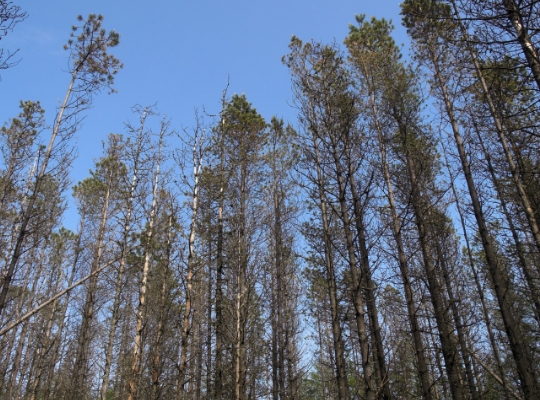The intensity, frequency and timing of thinning operations can be modified to reduce select climate change risks.
Changes can be applied within a rotation to accelerate adaptation ahead of end-of-rotation measures, such as changing the species composition of a woodland using underplanting or enrichment planting, or by stimulating natural regeneration. In stands with high wind risk, late thinning can increase the risk of windthrow, therefore wind risk should be considered as part of planning forest operations, and incorporated early.
As well as encouraging tree growth, thinning can offer the following adaptation benefits:

For further advice see the UKFS Practice Guide ‘Adapting forest and woodland management to the changing climate’
Printed copies are available to purchase from Forest Research.
"*" indicates required fields
The following risks may be reduced if the adaptation measure is applied appropriately:
Find out how a young Corsican pine stand in southeast England has been thinned to extend yield, minimise drought risks and Dothistroma needle blight.
The impacts of thinning on stand wind risk should be considered when planning forest operations. ForestGALES allows forest managers to estimate the probability of wind damage to any conifer stand in Britain, according to site and stand properties.